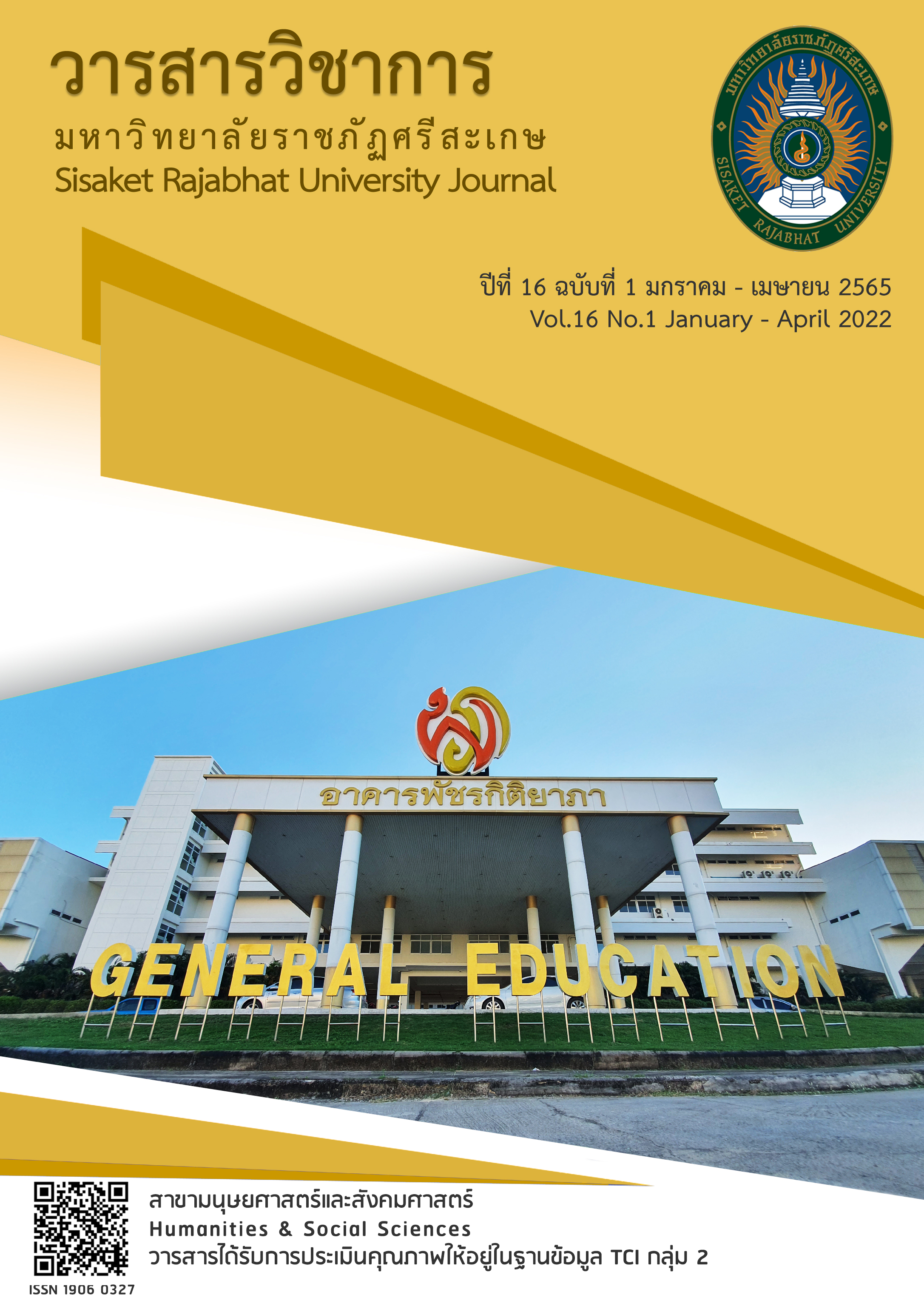Education Development of Enhancing Inclusion for Student with Exceptionalities of Piboonbumpen Demonstration School, Burapha University
Main Article Content
บทคัดย่อ
This qualitative research aimed to 1) study the condition of education supply for special-needs students in the inclusion program of Piboonbumpen Demonstration School, Burapha University; 2) find possible systemic structure development and inclusion study plan guidelines, and 3) promote understanding and collaboration among school staff related to the inclusion study plan. The population for the research was school staff, selected by using the purposive sampling and in-depth interviews were applied to two school executives, six regular program school teachers, and two special education school teachers. Semi-structured interviews, both individual and group, and field note observation were utilized to collect data. Data analysis utilized SWOT analysis, triangulation validity and a reliability check. The results of the research were: 1) the special education program was in the mainstream education pattern with 2 special needs students out of nine who were capable of studying in the regular classroom program (3-4 study periods). The other six attended the regular classroom program for 2-3 study periods while the rest took part in the regular classroom program for 1 study period or did not attend the class due to extreme emotional conditions or being unready to join inclusion classrooms. An additional result was that the school paid serious attention to the special education program for better lives for the special need students, abiding by the Education for Disabilities Act. Even though the school has been promoting the inclusion education for a long while, the special needs students were, in fact, currently studying their special education program without much chance to attend inclusion classrooms. Consideration and decisions were solely dependent on special education teachers. 2) The inclusive special education program was categorized as mainstream education; however, it was not considered to be fully a special education program. School policy was enforced to encourage equal access to education of special need students being nourished to grow with a better quality of life. It also paid robust attention to the necessary skills of students such as social skills, living skills, and self-reliance skills. The special education program, in contrast, did not have clear inclusive education structure to fully allow those with special needs to attend regular classrooms under individual conditions to reflect a true effectiveness of education for all.
Article Details

อนุญาตภายใต้เงื่อนไข Creative Commons Attribution-NonCommercial-NoDerivatives 4.0 International License.
1. เนื้อหาและข้อมูลในบทความที่ลงตีพิมพ์ในวารสารวิชาการมหาวิทยาลัยราชภัฏศรีสะเกษ ถือเป็นข้อคิดเห็นและความรับผิดชอบของผู้เขียนบทความโดยตรง ซึ่งกองบรรณาธิการวารสาร ไม่จำเป็นต้องเห็นด้วย หรือร่วมรับผิดชอบใด ๆ
2. บทความ ข้อมูล เนื้อหา รูปภาพ ฯลฯ ที่ได้รับการตีพิมพ์ในวารสารวิชาการมหาวิทยาลัยราชภัฏศรีสะเกษ กองบรรณาธิการไม่สงวนสิทธิ์ในการคัดลอกบทความเพื่อการศึกษา แต่ให้อ้างอิงแหล่งที่มาให้ครบถ้วนสมบูรณ์
เอกสารอ้างอิง
Bruneski. P., & Chen. E. (December, 2017). SWOT Analysis, strengths, weaknesses, opportunities, threats. Rehttps://images.template.net/wp-content/uploads/2016/01/18134501/swot-analysis-in-marketing-strategy.pdf
Carson, C. (2015). Rethinking special education’s “least restrictive environment” requirement. Michigan Law Review, 113(8), 1397-1426.
Children and Youth with Disabilities. (May, 2016). The Condition of Education: U.S. Department of Education, National Center for Education Statistics. Retrieved from http://nces.ed.gov/programs/coe/indicator_cgg.asp
Department of Education, National Center for Education Statistics. (June, 2016). Students with disabilities. Fast Facts: U.S. Retrieved from https://nces.ed.gov/fastfacts/display.asp?id=64
Ferry, M. (November, 2011). Ten items every special educators should have in their classroom. Retrieved from http://www.friendshipcircle.org/blog/2012/11/20/10-items-every-special-educator-should-have-in-their-classroom/
Harrison, P. J. (2010). Strategic planning and SWOT analysis. Health Adminstration Press. Retrived from https://www.ache.org/pdf/secure/gifts/Harrison_Chapter5.pdf
Meglemre, J. (2016). Faire does not mean equal: Creating an inclusive environment for students with disabilities. Leadership, 45 (5), 36-39.
Richard, J.G. (2000). The source for treatment methodologies in autism. LinguiSystems: IL
Rueda, R., Gallego. A. M., & Moll. C. L. (2000). The least restrictive environment a place or a context? Remedial and Special Education, 21(2), 70-78.
Vaz, S., Wilson, N., Falkmer, M., Sim, A., Scott, M., Cordier, R., & Falkmer, T. (2015). Factors associated with primary school teacher’s attitudes towards the inclusion of students with disabilities. Plos One, 1-12. doi:10.1371/journal.pone.0137002


